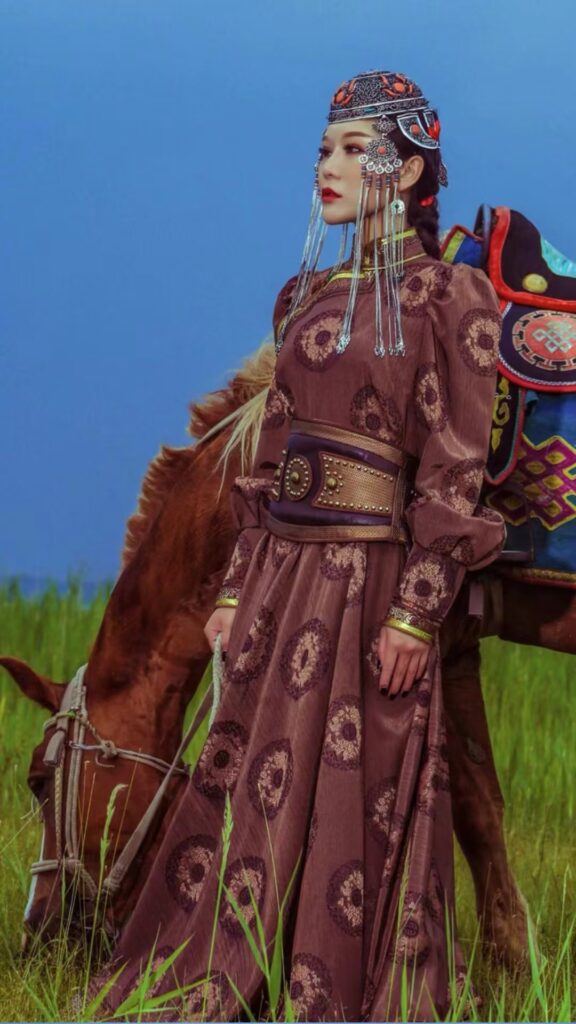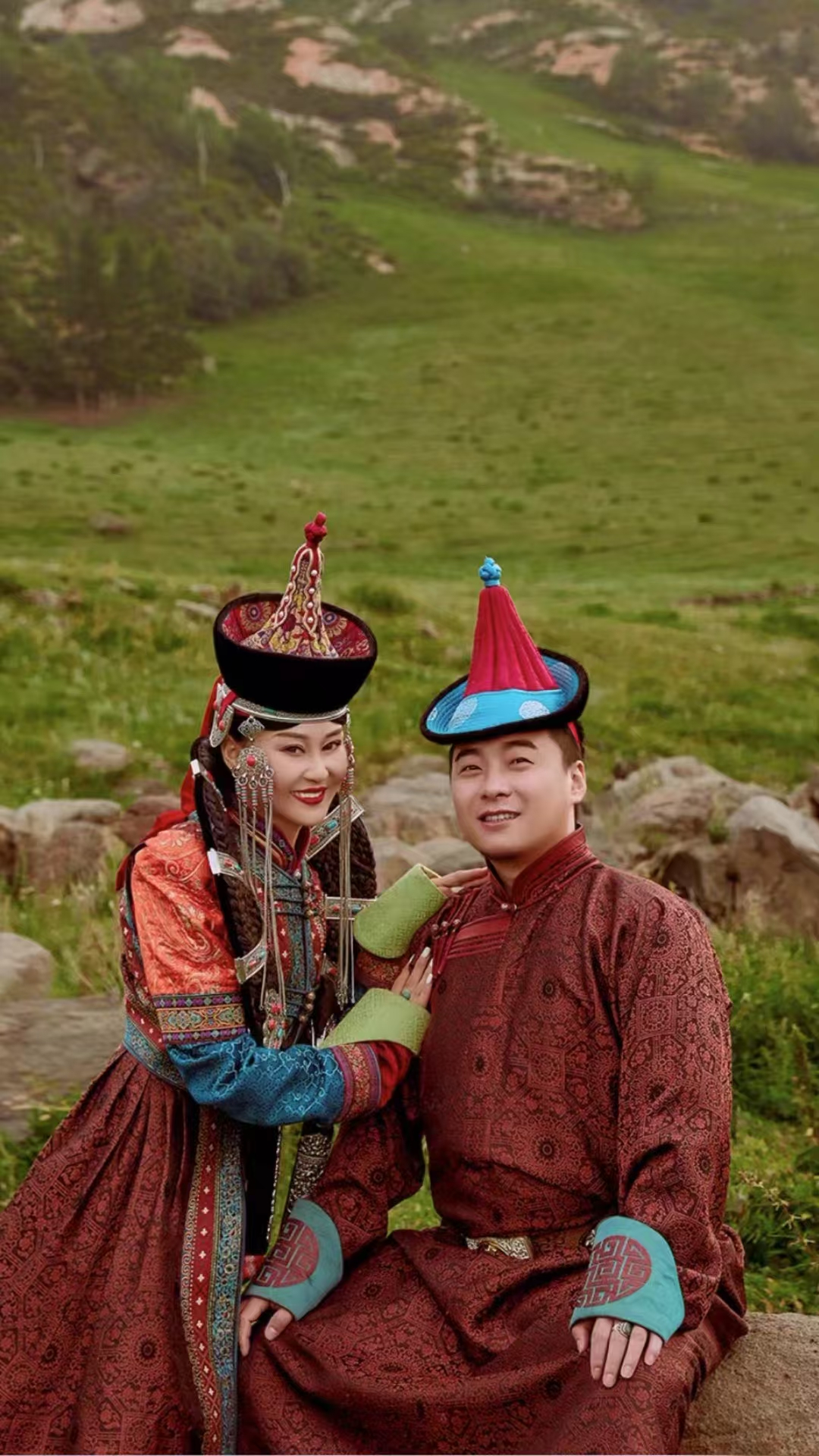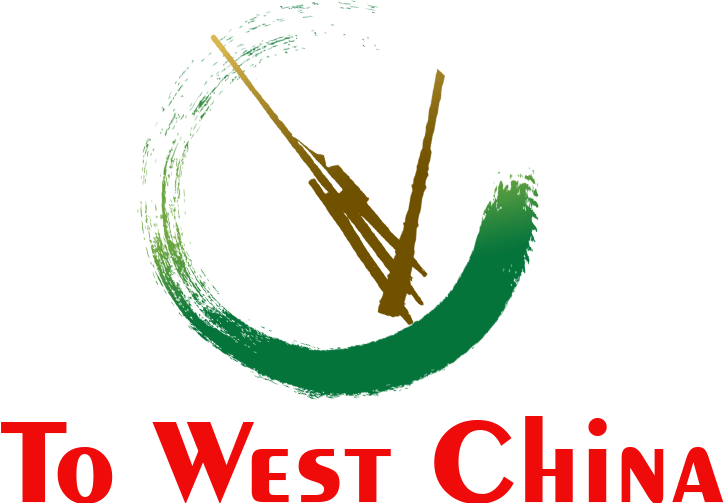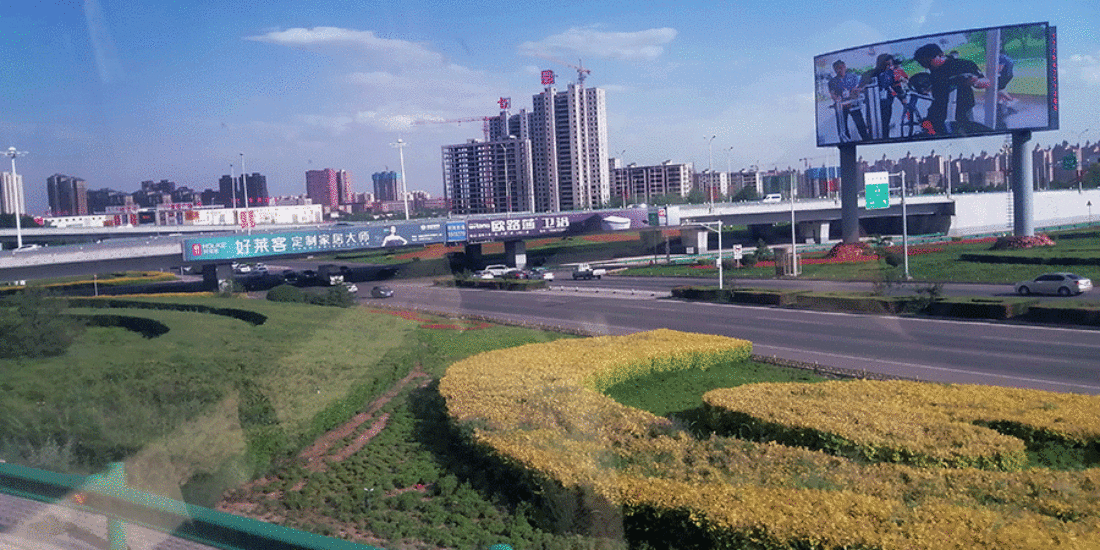The hair dress of Erdos Mongolian
Kaili
June 26, 2024
By Lee Mao Ching( our tour operator and guide)

The costume of Erdos contains the common elements of its neighbors. The waistcoat is similar to Darkhan and Muminggan who live in the north, its garment is similar to the Four Princelings group to the northeast.
Its Erdos waist coat is with open collar in the front, then takes a detour to the right arm, down to right waist and turns to its end in the front. The inlayer garment is like Han Chinese cheongsam, with side slits but much wider than cheongsam, keeps the nomad style. This dress style is worn for special occasions. The second common garment is with open in the straight front, fastened with knot buttons in the upper part with low part is with slits in the front and sides, it is said this design for horse riding.
Most visitors to the Erdos are impressed with the hair dress, of its ornaments of turquoise, agate, red coral, silver or gold clad crown ring, weight from three to seven kilograms. There is no doubt that the Erdos hair dress is more typical from any other Mongolian groups.
The history of the brilliant haridress could be dated back to Han dynasty, of two thousand years ago. In a farmer’s field in Jungar Banner, 150 kilometers to the east of Erdos headquarter Dongsheng, thousands pieces of burial objects were unearthed from four ancient tombs in 1972, including a golden capped crown atop with a sitting eagle , its beak is ornamented with turquois , the golden crown ring is curved with tigers biting the goats. Several pieces of hairdress are consisted of stone, agate, red coral . Though the hair dress is not so complicated and heavy as those of today, but still very brilliant for two thousand years. These burial objects belong to the East Huns, who may have blended to today’s Mongolian of Erdos, Darkhan, of the Four Princelings.
More than forty ancient tombs and relics have been found for archaeology study across Erdos. No hair dress with ornaments of red coral, turquois were found in the later unearthed ancient objects, and these tell the inhabitants are not a special member of nomadic pastoralists, but Tangut( a branch of ancient Tibetan), Uyghurs, and Han Chinese from the south across its Great Wall.



0 Comments